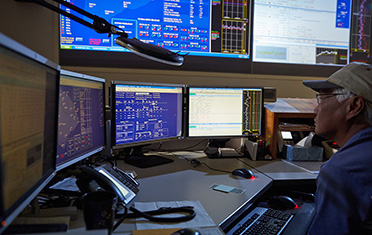Storm Center
Emergency Preparedness
Keep your family safe during emergencies and get an emergency preparedness handbook
Storm Restoration Process
Following a major storm or natural disaster, power can be restored anytime between several minutes to several days. This depends on several factors:
- The cause and severity of the damage to the electric utility's system
- Weather conditions
- Accessibility of the damaged area
- Special parts needed to repair the damage
- In general, underground repairs take longer than repairs to overhead lines
After dangerous conditions have subsided, crews will be deployed to repair lines and restore power. Emergency facilities such as hospitals, the Board of Water Supply, wastewater plants, military facilities, and the airports will have first priority for restoration after a storm. Be assured, though, that we remain committed to restoring service to all of our customers, and our crews will do their best to restore power as soon as possible.
Download our PDF: Steps to Restore Power Safely After a Storm (PDF)
Steps to Restore Power Safely After a Storm
Take a look at how we restore power as quickly as possible, with safety as our top priority. Whenever it's possible to safely do some of these steps in parallel, we will do so. Even if you don't see us in your neighborhood, be assured we are working to restore power as quickly as possible. Thank you for your patience as we move through these steps to restore power to everyone.
-
Safety first
The safety of the public and our crews is our top priority. Before proceeding with repairs, we must first address any immediate potential hazards. This includes complying with all environmental rules. We also need to take steps to ensure there is no electricity running through affected areas. After we’ve addressed safety issues, we move to Step 2...
-
Damage assessment and clearing
We must determine the extent of damage and any materials/equipment requirements, such as for downed poles and lines. We also must address accessibility issues, including tree trimming, making trails and/or helicopter landing/staging pads, debris removal, trenching, draining flooded underground systems, etc.
-
Repair main transmission and substations
If needed, we first repair main transmission lines and substations, which serve as the backbone of the electric system. Substations may need to be inspected to determine if the problem stems from lines feeding into the substation or the substation itself. This step sometimes includes flying in materials, equipment and personnel.
-
Repair neighborhood circuits
Poles, equipment, lines and/ or underground cables in affected neighborhoods are repaired. Often, at this stage, we can incrementally restore large groups of customers by transferring them to an alternate circuit, if available.
-
Repair service lines and restore power to individual customers
Our crews then repair individual service lines and verify the customer’s electrical connecting point is safe to use so the remaining customers in affected areas can be restored.
-
Full circuit restoration
We then restore the system back to its normal condition by switching customers back to their normal circuits. Any customers still out of power at this point should call our Trouble Line. This is an important way for us to learn about any “pocket” outages, which generally affect smaller pockets of customers. We can then focus on restoring power to those remaining areas.







